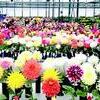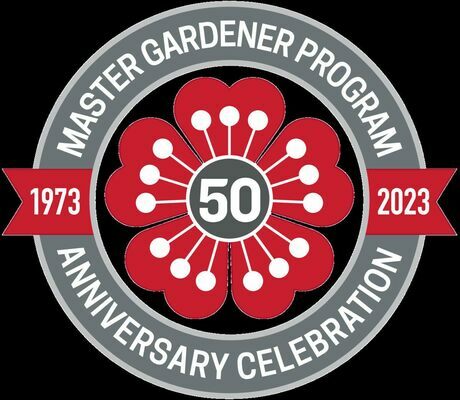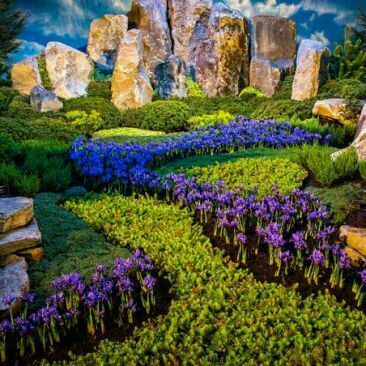New plants for 2023 to start dreaming about
New plants usually improve existing plants and offer better disease resistance, or more flowers or larger leaves, or … well, you get the picture.
Sometimes it’s just a new color or a different size. New plants aren’t always better, but, to a gardener, they are always exciting and note-worthy. As in the past several years, I offer readers a very short list of plant introductions that I’ve seen at test sites, growers’ fields, and nurseries, not to mention the Northwest Flower and Garden Festival, which will begin to show up at local garden centers.
The problem with most ‘new introduction’ lists is the plants may be just coming on the market, and finding them is a catch-as-catch-can situation. If nothing else, gardening teaches someone new to the hobby and adventure, the development and virtues of patience. Gardeners not only experience the ‘thrill-of-the-hunt’ if they wait long enough, but they also experience the thrill of ‘saving a buck.’ The $50 daylily I had to have from a specialty hybridizer eventually appeared on a Flower World display table at $15. It was a case of instant gratification over-powering my economic common sense (and, yes, it was worth it). Whether or not I buy, it’s always fun to see what plant breeders have come up with and imagine where I would place it in my or a client’s yard.
During my travels, I look for plants with more than one reason to purchase them. A long bloom time is excellent, but I’d also want drought tolerance, new colors, or evergreen status. Considering what plants, especially new ones, cost these days, I want as many enhancements as possible. So, for your general consideration, here's my thumbnail list of new plant introductions with multiple notable attributes from the major plant groups of trees, shrubs, perennials, and, even, an annual, which may pique your developing horticultural interest.
As trees have a longer development phase, not as many new stars reach the marketplace each year as say, annuals. However, that doesn’t mean there are no new candidates. New specimens that have caught my eye include.
I thoroughly like crabapple trees in the landscape. They are of a size that is appropriate for most yards and street sides and are moderately fast growers. This year, Malus transitoria ‘Royal Raindrops’ joins the family.
This crabapple has multiple aspects to like. The first is a deep purple cut leaf foliage that does not move to a green coloration during the season. For those who eschew the use of chemicals in the yard, this sweetie has superior disease resistance to rust, mildew, etc. Like most established crabapples, ‘Royal Raindrops’ is drought tolerant. With our summers, that is a good thing. The value-added elements of this tree, bookmark the growing season. Spring brings with it eye-popping magenta-pink blooms that cover the tree. Autumn brings with it little red apples. As the fruit are just a quarter inch in size, birds love them and ill provide homeowners with a month or two of avian aerial aerobics as the birds devour the seasonal morsels.
Betula tianschanica ‘Emerald Flare’ is a distinctive, cold hardy birch selection that grows in a narrowly pyramidal form. It sports emerald-green foliage throughout the summer and bright golden-yellow foliage in autumn. Its slight exfoliating white bark is extremely showy, adding significant seasonal interest. At maturity, Emerald Beacon stands 30-feet tall with a spread of 12 feet. During summer drought conditions, it exhibits no foliar stress symptoms such as leaf scorch or early leaf drop, which is seen on many other birch species. Among its other virtues, Emerald Beacon has good resistance to birch leaf miner and leaf spot. This tree was developed by North Dakota State University, consequently, it is very cold hardy, down to Zone 4a.
Honorable mentions include: Parrotia ‘Golden Bell Tower’ and Cercis ‘Black Pearl.’ In the category of new shrubs, you can usually find something interesting to grace an underused spot in the landscape. For this year, I have noticed …
Daphnes are always a value-added inclusion to an area near the front door or along a walkway. Whether or not there’s snow on the ground, the mid-winter fragrance of winter daphne is not to be missed. The same can be said for the spring-blooming cousins. In this case, the winter variety, Daphne odora ‘Perfume Princess’ is the one I came across. This long-blooming cultivar, with purplish buds opening to large clusters of soft pink flowers, is a winner. Expect the traditional intoxicating daphne fragranc, but with distinct citrus undertones. The Princess grows to about three feet tall and three feet wide. Again, it fits our USDA Zones as it good to Zone 7.
Gardenia jasminoides ‘Steady As She Goes’ is arguably, the best hardy gardenia I have encountered in several years. It has large double white blooms that fade to an antique ivory and continue to bloom right up to frost. As with most gardenias, Steady has an excellent fragrance. A few of these will provide the scent-on-the-air after the winter daphnes and sarcococca have finished the blooms. Naturally, it is evergreen and at three-to-five feet tall, it will add to the backbone plantings of your winter yard. Multiple attributes for just one price. I like that.
Rosa ‘Tangerine Skies’ is a climbing rose which produces fully double four inch wide mango-orange blooms over glossy green foliage all summer long. Once you get a little closer to this dazzler, the intense fragrance will also impress you. This climber won’t take over the side of the house as it grows to a modest eight feet tall. It has excellent resistance to common rose diseases such as black spot and is tough enough to withstand drought and humidity with grace. This climber is fairly low-maintenance and needs only a bit of light pruning to keep it in top form. Add this bold orange rose to your collection for fragrance and color that will make your garden stand out.
Honorable Mentions include Hibiscus ‘Valentine’s Crush’ (Rose Mallow), Hydrandea macrophyla ‘Cherry-Go-Round’, Ilex verticulata ‘Gold Winterberry’, and WeFloridalorida ‘Vinho Verde.’
In the world of new Perennials, these are among the ones that caught my eye.
Euphorbia x ‘Miner’s Merlot’ is a hybrid (the ‘x’ in the name gives that fact away). It is the first of its kind I have ever recommended. Its intense purplish-black foliage is the main reason to have it in the yard or container. The color remains throughout the summer on this compact evergreen perennial. The show gets even better when the chartreuse flower bracts appear from late spring into early summer. This 20 inch plant will be great for a dry, full sun location. The caveat with this little guy is not to allow the sap to remain on your skin as it is caustic. Keep it away from your kiddos.
Salvia greggii ‘Ultra Violet’ is a new hybrid western sage that is more cold hardy and it is also, most assuredly, more compact than so many of the S. greggii currently on the market. It has iridescent, deep purple flowers that add a pop of color to the yard, especially in ta late summer garden. It starts blooming in July and will continue through autumn. This 18 inch by 24 inch sage is a top perennial for dry sites, establishes easily and is both rabbit and deer resistant. It is also is a bee, butterfly, and pollinator magnet for an organic landscape.
Honorable mentions include Veronica prostrata ‘Aztec Gold’ Creeping Speedwell, Psephellus simplicicaulis ‘Belina Pink Cornflower’ and Sedum ‘Little Shine.’
Finally, in the Annuals category.
I am not a gardener who usually has an interest in annuals or indoor plants, but I couldn’t resist adding this Rex Begonia ‘Jurassic Heartbeat’ because … just look at it! Whether on a shelf in the house during the winter months or in a shady outdoors container, this amazing plant will be a ‘wow’ moment for any company you invite over. I think the photo speaks for itself. For those of you who enjoy container design, this particular container vignette includes Impatiens ‘Beacon Coral’ and Stipa ‘Sirocco’ along with ‘Jurassic Heartbeat.’
There are so many plants that will be vying for your attention at garden centers and nurseries this year. Remember to look past the first visual impression they give you. What other value-added qualities can they provide to you, the landscape and/or the beneficial insects who inhabit your yard. Observation and research will provide you with the best bang for your buck. Happy gardening.
Contributing columnist, Bruce Bennett, is a WSU Master Gardener, lecturer and a garden designer. If you have questions concerning this article, have a gardening question, have a concern with your landscape or want to suggest a topic for a future column, contact Bruce at gardenguy4u@gmail.com.
Please support The Woodinville Weekly by subscribing today!
You may also like:

.png)
.png)
.png)




